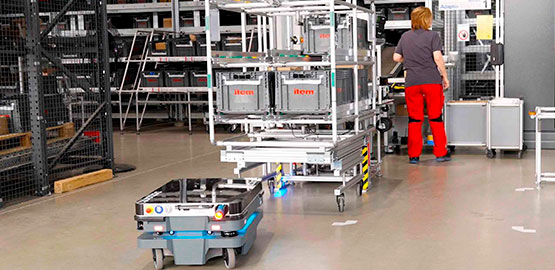How AGVs and AMRs differ
Mobile robotics optimises material flows, but how do AGVs and AMRs differ? Find out all you need to know about their different operating principles.

Transporting goods made easy – in our free white paper, you will discover the benefits of mobile industrial robots for your intralogistics operations, their potential applications and how to integrate them seamlessly into your processes.
Mobile robotics optimises material flows, but how do AGVs and AMRs differ? Find out all you need to know about their different operating principles.
What do you need to consider in terms of the robots themselves and getting staff on board? The white paper answers this and other questions.
How do mobile industrial robots adapt to different transport tasks? Flexible solutions are called for. Find out about our modular Base Carts and Top Modules.
Mobile industrial robots offer numerous benefits for your internal material flow – especially at a time when skilled workers are hard to come by. They boost efficiency, plug staffing shortages and flexibly absorb peaks in demand. Industrial robots also take the strain off staff by relieving them of strenuous and monotonous transport tasks 24/7.
Further benefits include continuous availability, excellent adaptability, and increased process reliability and occupational safety.

Industrial robots offer bespoke solutions to specific challenges in many sectors. Our white paper shows how smart mobile robotics optimises materials handling technology in five industries and outlines the benefits that robots offer in typical scenarios.

What does a mobile industrial robot system actually look like and what difference does it really make? Undertaking complex tasks every day in an area of 67,500 m² at the item logistics centre, autonomous mobile robots (AMRs) automate processes and boost efficiency.
Companies that use modular accessories can easily adapt their industrial robots to specific requirements.